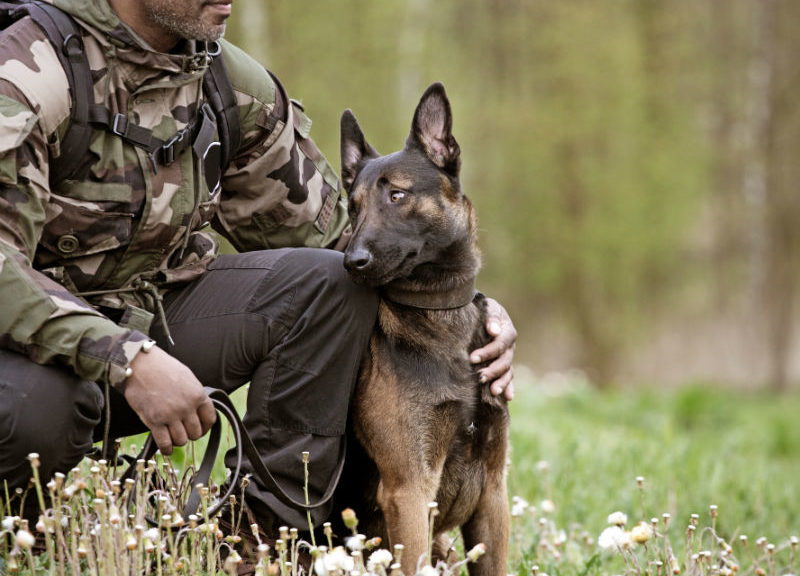Protection Dogs: Unveiling the Canine Guardians of Today
In a world where security is a growing concern, the concept of protection dogs has become increasingly prominent. These remarkable canines are more than just loyal companions; they are highly trained four-legged guardians capable of providing an unparalleled sense of safety to their human families. Protection dogs have evolved from their historical roles as fierce defenders of livestock and property to become sophisticated protectors of modern homes, businesses, and even public spaces. In this article, we delve into the fascinating world of protection dogs, exploring their history, training, and the essential role they play in safeguarding our lives.
The Evolution of Protection Dogs
The history of protection dogs can be traced back thousands of years. Early human civilizations recognized the value of canine assistance in safeguarding their settlements and livestock from predators and intruders. Over time, selective breeding led to the development of specific traits and characteristics that made certain breeds naturally adept at protection work.
In ancient civilizations like the Assyrians, Egyptians, and Greeks, dogs were employed to guard royal palaces and other important locations. These dogs were renowned for their loyalty, courage, and territorial instincts.
During the World Wars, protection dogs gained significant prominence in military and police operations. German Shepherds and other breeds showcased their exceptional abilities in detecting explosives, tracking down enemies, and guarding military installations.
Contemporary Protection Dogs
Today, protection dogs have transitioned from military and police roles to becoming cherished members of private households. Their exceptional training and temperament have made them sought-after assets for personal and family protection. Some key traits that make these dogs exceptional guardians include:
- Intelligence: Protection dogs are highly intelligent and capable of assessing threats accurately. Their keen sense of judgment allows them to distinguish between real dangers and harmless situations.
- Obedience: Proper training instills discipline and ensures protection dogs respond promptly to their handlers’ commands. Obedience is vital to maintain control and prevent aggressive behavior in inappropriate situations.
- Protective Instincts: Protection dogs possess a strong protective instinct towards their human family and territory. They are instinctively alert and vigilant, always ready to act if they perceive any threat.
- Fearlessness: Well-trained protection dogs are brave and fearless. Their courage allows them to confront potential threats without hesitation, dissuading intruders and providing a sense of security to their owners.
Training Process
The training of protection dogs is a rigorous and systematic process that requires the expertise of professional trainers. Some key aspects of their training include:
- Socialization: Early socialization is crucial to ensure protection dogs are well-adjusted and comfortable in various environments and around different people and animals.
- Obedience Training: Basic obedience training forms the foundation of protection dog training. Commands like “sit,” “stay,” “heel,” and “come” are fundamental for their overall discipline.
- Bite Work: Controlled bite work is an essential part of their training, teaching dogs how to apprehend threats effectively without causing unnecessary harm.
- Scenario-based Training: Dogs are exposed to simulated real-life scenarios, enabling them to practice their protective skills under different conditions.
The Benefits of Protection Dogs
The presence of a well-trained protection dog offers numerous benefits, including:
- Enhanced Security: Protection dogs act as powerful deterrents, significantly reducing the risk of burglary and intrusion.
- Family Protection: These dogs become loyal and devoted protectors of their human families, creating a strong sense of security for both adults and children.
- Peace of Mind: Knowing that a vigilant and capable guardian is watching over the home provides unmatched peace of mind to homeowners.
- Versatility: Protection dogs can also be trained for various specialized tasks, such as search and rescue, therapy work, and service dog tasks.
Conclusion
Protection dogs are not just pets; they are skilled professionals dedicated to safeguarding their human companions. Through centuries of evolution and specialized training, these canines have proven themselves to be intelligent, loyal, and courageous protectors. As we navigate an ever-changing world, protection dogs continue to serve as valuable assets in securing our lives, property, and the well-being of our families. Their unwavering commitment to our safety is a testament to the unique bond between humans and their four-legged protectors.
